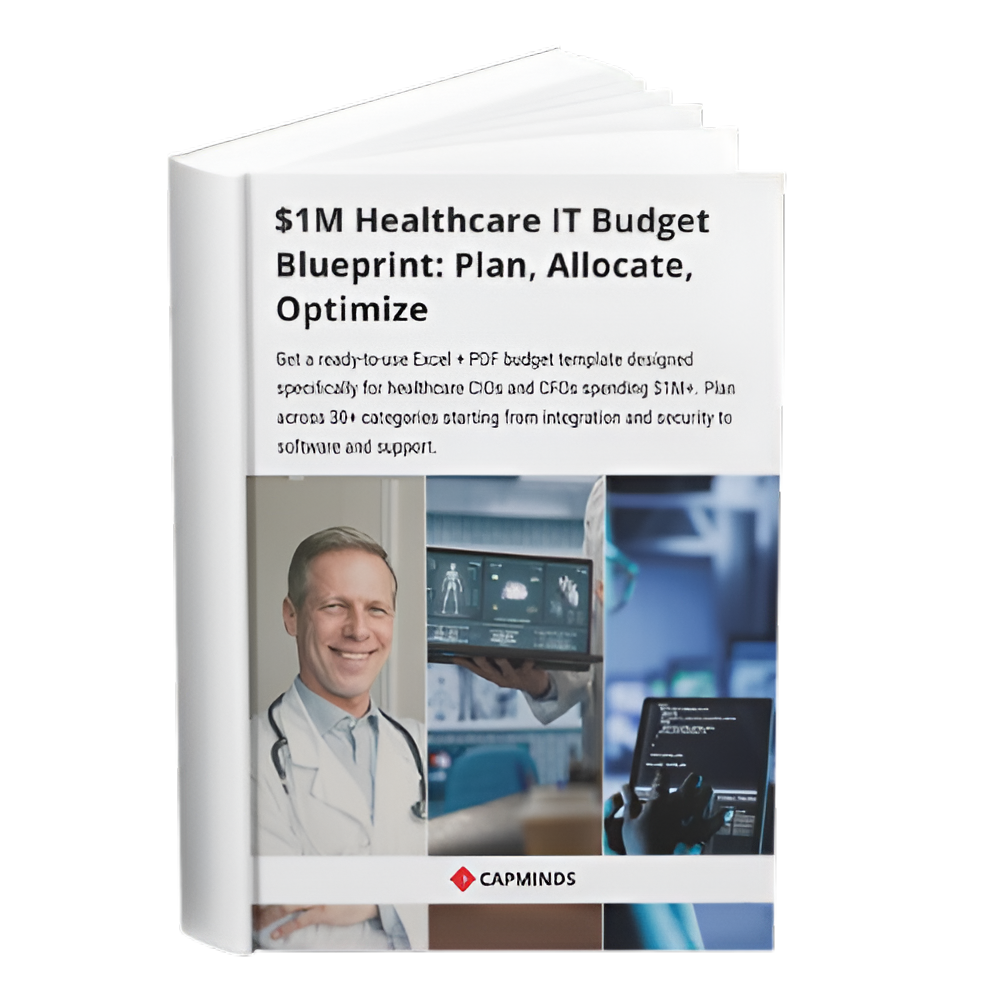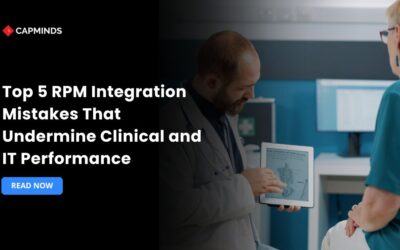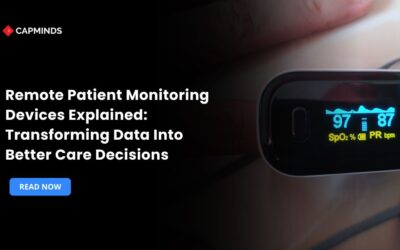How to Architect a Scalable RPM Platform for Multi-Condition Care Programs
Remote patient monitoring systems have evolved from single-device experiments to enterprise-grade care networks tracking thousands of patients for diabetes, hypertension, COPD, behavioral health, and more. Many businesses fail to progress beyond proof-of-concept due to outdated infrastructure that lacks scale and flexibility.
This blog guides CTOs, Health-IT architects, and digital-health product managers through the core design decisions required to build a scalable RPM platform that supports multiple chronic care pathways, integrates with diverse ecosystems, and meets evolving regulations in the United States.
Understand the Scalability Challenge
1. Volume Increase and Data Velocity
A single glucose meter sending two readings per day per patient yields 730 data points per year. Adding a blood pressure cuff (same cadence) and a digital weight scale (weekly) for 5,000 patients results in over 5 million observations yearly.
Multi-condition RPM needs near-real-time analytics to trigger therapeutic interventions based on diverse data sources, including IEEE 11073 device data, patient-reported outcomes, and EHR vitals.
2. Workflow Complexity
- Care pathways vary in measurement frequency, alert levels, escalation logic, and reimbursement criteria, such as CPT 99457 vs. 99454.
- Clinicians want a single longitudinal perspective, not individual dashboards for each disease or vendor device.
3. Interoperability and Regulatory Pressure
- CMS, ONC, and TEFCA programs promote FHIR®-based interchange of RPM observations.
- HIPAA, SOC-2, and state privacy requirements require safe storage, audit trails, and least-privileged access.
- Lifting and shifting a single-condition platform will cause it to collapse under multiple loads. Scalability must be built into your RPM design from the start.
Architecture of a Scalable RPM Platform with Multiple Conditions
1. Modular Microservices vs Monoliths
| Layer | Typical Microservice Examples | Why It Matters for RPM Platform Scalability |
| Device & Data Digestion | Bluetooth‑to‑cloud gateway, HL7v2 listener, FHIR API | Add new device types without redeploying the whole stack |
| Data Processing | Add new device types without redeploying the whole stack | Isolate CPU‑intensive jobs for auto‑scaling |
| Clinical Intelligence | Rules engine, AI risk‑scoring model | Swap algorithms without touching the UI layer |
| Care Orchestration | Task assignment, patient triage, billing logic | Tune workflows per condition or site |
| Presentation & Reporting | React front-end, clinician mobile app, BI service | Tailor views by role (nurse vs. CFO) |
Use containerized microservices (Docker) managed by Kubernetes or ECS. Each component scales horizontally to meet demand, assuring performance even amid post-holiday increases in patient readings.
2. Cloud-Native Data Pipeline
- Streaming Ingestion uses Amazon Kinesis, Google Pub/Sub, or Apache Kafka to process large amounts of telemetry.
- Normalization and FHIR Mapping transform raw device payloads into FHIR Observation, Device, and Patient resources.
- For long-term storage, combine cloud object storage (S3, Azure Blob) with a serverless analytics warehouse (Snowflake or BigQuery).
- The Serving Layer uses a low-latency NoSQL database (DynamoDB or Firestore) to provide near-real-time alerts and dashboards.
3. Standards-Compliant Device and EHR Integration
- Device Layer supports Bluetooth LE, Wi-Fi, cellular hubs, and new Matter/Thread protocols. Prefer providers who provide FHIR Device and FHIR Observation endpoints.
- Use the SMART-on-FHIR launch to integrate RPM charts directly in Epic, Cerner, or athenaClinicals.
- Bidirectional data flow pushes enrollment data like demographics, care plans, and retrieves vitals back into the EHR. This prevents “swivel-chair” operations, which hinder physician adoption.
4. Shared Clinical Rules and Alerting Engine
- Low-Code Authoring allows doctors to alter thresholds like SBP > 160 mmHg without redeploying code.
- Package reusable rule sets for diabetes, CHF, and COPD so that new programs may debut in weeks rather than months.
- To fulfill FDA SaMD standards, use an explainable AI overlay that combines deterministic rules with ML-based risk assessments.
5. Robust Security and Compliance
- Zero-Trust Network Separation of ingestion, processing, and presentation planes.
- Encrypt PHI like CCMs, RPM measurements at the field level with FIPS-140-2 approved modules.
- The audit and logging pipeline saves data to an immutable storage (AWS CloudTrail → S3 + Glacier) for seven years of retention.
- Role-Based Access Control aligns with NIST SP 800-53.
6. Observability and Cost Management
- Monitor ingestion lag, processing delay, and per-patient computation costs.
- Use Kubernetes HPA based on CPU and custom queue depth measurements.
- Use FinOps Dashboards to analyze spending by condition group and demonstrate ROI for value-based care contracts.
Step‑by‑Step Guide to Launch a Multi‑Condition RPM Program
1. Discover (Weeks 0-4)
Align clinical, financial, and IT executives, establish target conditions, vet device suppliers, and create an ROI-backed requirements brief.
2. Plan (Weeks 4-8)
Plan the cloud microservices architecture, map data flows to FHIR® Observations, establish security rules, and create an agile backlog.
3. Build (Weeks 8-20)
Set up containerized ingestion, mapping, rules, and dashboard services using CI/CD and Kubernetes autoscaling. Secure and test everything.
4. Pilot (Weeks 21-28)
Onboard approximately 100 patients across two conditions, assess alert accuracy and user input, and provide a performance report including cost and adherence data.
5. Scale (Months 7-12)
Add more conditions and locations, incorporate RPM data into the EHR via SMART-on-FHIR, complete SOC-2 audits, and analyze cost-per-patient as enrollment grows from hundreds to thousands.
Common Pitfalls and How to Avoid Them
- To avoid device vendor lock-in, use open standards like BLE and FHIR and maintain device-agnostic data models.
- Over-customizing rules for individual clinics maintains a core guideline library; allows for local variation through parameter files rather than code forks.
- Early mitigation for FinOps involves tagging resources by tenant and environment and implementing budget warnings from the start.
- To improve patient engagement and UX, consider using consumer-grade mobile onboarding, prizes for adherence, and automatic SMS reminders.
Scale Multi‑Condition RPM with CapMinds
At CapMinds, we empower healthcare enterprises to deliver RPM at scale securely, compliantly, and profitably. From device integration to ROI tracking, our digital health solutions are designed to optimize your care delivery and operational performance.
Here’s what CapMinds brings to your enterprise RPM journey:
- End-to-End RPM Implementation – From patient onboarding to device provisioning and clinical workflows
- Compliance & Security – HIPAA, GDPR, FDA (SaMD), ISO 13485-ready frameworks to mitigate risks
- HL7/FHIR Integration – Real-time EHR sync, automated alerts, and edge-optimized data streaming
- Billing Optimization & ROI Modeling – CPT tracking, TCO calculation, and reimbursement acceleration
Whether you’re scaling post-discharge heart failure programs or building RPM into your chronic care strategy, CapMinds is your strategic ally. Let’s future-proof your RPM deployment safely, intelligently, and efficiently.
Contact CapMinds today for a custom consultation!




